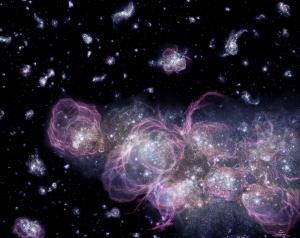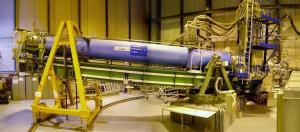Will tokamaks unveil the #1 mystery of the Universe?
Because of their large magnetized volume, tokamaks could be used to detect the elusive particles that are postulated to constitute dark matter/dark energy.
There is a consensus among cosmologists and particle physicists that "exotic" particles are key to understanding dark energy and dark matter. Dubbed "chameleons" (they are able to change their own mass) and "axions" (in reference to the US detergent Axion because their existence may help to clean up some theory problems) these hypothetical particles have been assigned a set of properties that would explain the behaviour of the Universe. As of today, however, both chameleons and axions have escaped detection.
CAST, which is basically a 9.2-metre-long dipole magnet aiming at the Sun, has a strong magnetic field (~9 T) but a rather small magnetized volume (~ 0.06 m³). "Since the probability of producing a photon by the Primakoff conversion of an axion is proportional to the magnetized volume multiplied by the magnetic field squared," says Dr Jean-Claude Vallet, of CEA's Institut de Recherche sur la Fusion Magnétique (IRFM) "with Tore Supra (31 m3), we have a device which, equipped with the proper detectors, should be at least 150 times more efficient than the CAST experiment."
And there's more. "Tore Supra would also make a very decent detector for solar chameleons. To further improve its intrinsic quality, our colleagues at CERN suggest that we couple one or more X-ray telescopes of the XMM type to our tokamak and aim them at the Sun, where solar chameleons are postulated to originate ..."




